The Stranger Beside Me Read online
Page 2
Audrey had never heard of me, but she was aware of Ted Bundy’s crimes and his execution and read stories in the local papers in the Midwest, where she had moved after graduation. She decided to read my book twenty-eight years after it was first published.
“It was not until I hit page 98 in your book that I realized how close I may have come to being personally involved. You mention the street address where Ted resided during the time of the Seattle-area murders. For the first time I realized my apartment was less than a block from his rooming house.
“One night (around 1973-1974), my roommate, an attractive brunette, and I (a long-haired blonde—parted down the middle) decided to treat ourselves to dinner at Horatio’s. She had aced her final in nursing school and we got dressed up to celebrate. I had been assigned a weird parking place at the apartment complex, which entailed going through the alley. It was turning dusk when we walked the stairs from our third-floor walk-up, and when we hit the alley, I remembered that I had forgotten my night-driving glasses. I told her to stay there and I would dash back up and get them.
“I did.
“When I got back down to the bottom of the apartment complex and turned the corner into the alley, I saw my roommate attempting to fend off a man who had her in a tight headlock.
“I froze and then let out a guttural scream that I’ve never been able to duplicate since. It was so primal and bold that, later, a couple of guys a few blocks away told us they had heard it and knew something was wrong. The man then let go of my friend and ran toward 12th Avenue onto a lit back porch of a house. When he got to the porch, he turned around and looked back at us.
“I will never forget those eyes and that stare as long as I live. At the time, other than being terrified, I didn’t think for a moment it could have been Ted. I don’t know why I didn’t put it together, except to say that I believe I had yet to see some media stories about him.
“In the next few days, it was reported that Georgeann Hawkins had disappeared.”
Audrey and her roommate called their boyfriends the night of the abduction attempt, and they rushed over and took them to their houses. Audrey’s fiance was an assistant professor at the University of Washington and he urged her to report it. But she didn’t because she felt no crime had actually been committed.
“I was young and naïve.”
Strangely, during the early morning when Ted was executed in January 1989, Audrey—then living in California— recalls sitting straight up in bed from a deep sleep at the exact moment Ted died.
Was it Ted who found her lovely brunette roommate apparently alone in the dark?
I think so.
Audrey wrote to me one more time. I had told her that my ultimate goal was to warn women of danger, and hopefully save their lives with some bit of advice or caution they read in my books.
“Just the other night,” she wrote, “I had watched a guy watch me go into a Pilates class, and he was still lurking when I headed out. So I went back in and called the cops to give me a police escort out of the building. He moved along before they arrived, but it is something, even at fifty-three, I wouldn’t have thought to do until reading your book, and realizing what the modus operandi is with some of these jerks.”
A woman named Marilyn wrote a letter to me in 1998. She, too, lived in the greater Seattle area in 1974, and she was headed north on the I-5 Freeway one evening in early summer, for a meeting of social workers in a hospital in Northgate.
“I left the freeway one exit too soon,” she recalled, “and I was looking for a way to get back on. But all I found was a sign that said VANCOUVER B.C. ONLY. It was then that I became aware of a light-colored Volkswagen Bug behind my car. I was pretty disoriented at that point, and I turned east on 65th Street instead of west toward the freeway. I kept turning into streets, looking for the freeway signs, but I was just going in a circle. After that, I was so late for my meeting that I was getting really nervous and the streets got narrower and narrower.
“The Volkswagen was still behind me, and I was frightened. The guy driving it couldn’t possibly be taking the same mixed-up path I was on. The last turn had no outlet at all— unless you backed up. I pulled over to where the pavement ended in a field of weeds, and stopped. The guy in the VW parked behind me. …”
Marilyn wrote that she had quickly locked her doors, but the man—with wavy brown hair—reached for the door handle anyway, and stared at her angrily through her driver’s side window.
“Just then, a car full of high school guys pulled in behind him. I don’t know why, but they probably saved my life. The angry guy ran back to his car, forced them to back up, and he turned around and he was gone. The kids led me back to the freeway.
“It was Ted Bundy. I recognized his eyes when I saw his picture in the Seattle Times several months later.”
On August 10, 2007, I got an email from a fifty-two-year-old woman who had grown up in Olympia, Washington, our state capital. Ted worked for the Washington State Department of Emergency Services in Olympia for several months, beginning in the spring of 1974.
Bettina wrote that she believed she had encountered Ted Bundy twice in the early-to-mid 1970s.
“I was in high school in Olympia the first time,” she wrote, “and had decided to skip and walk home from school around Capitol Lake. I lived halfway up Harrison Hill on the west side of Olympia. It was a sunny day, I was halfway around the lake, and a VW Bug pulled over to me. The man inside asked if I wanted a ride. (I wore my hair long and parted in the middle in those days.) I said ‘sure,’ and got in the car. My visual memory is very vague as I was extremely shy, so I didn’t really look at him. Just sideways glances.
“Anyway, I remember he had shortish dark brown hair. I don’t remember the color of the Bug, but it seemed like it was a light color. He asked me what college I went to, and I remember feeling flattered that he would think I was in college. I answered that I wasn’t in college, and that I was in high school. He dropped me off where I specified, and that was it.”
But the man knew where Bettina lived.
The second time Bettina saw this man was about eighteen months later. “I was already out of school, living in a rented house on Franklin Street in downtown Olympia. I still wore my hair long and parted in the middle. It was very late at night and I was wakened by a knock on the door. The door had windows, and I saw what I perceived to be a policeman standing on the porch. I remember looking out to the street before I opened the door and it struck me as odd that I hadn’t seen a police car. But I opened the door anyway and peered out, still looking for the car that wasn’t there.
“I had a small dog that was barking wildly during all this, but the ‘policeman’ said he had a report from neighbors (across the street from me was a huge parking lot to a church—no houses). He pointed across the street, and he said that a girl with long hair, as the runaway was described, was seen coming into my house.
“I had my hair up in curlers with a bonnet on, and I said, ‘Well, I have long hair, but I’m not a runaway—I live here.’ He seemed adamant about the runaway thing and he kept mentioning the description of long hair, but my dog was going crazy and I just wanted to end the whole conversation. So I just said he had the wrong place and shut the door. That was it. I never did see a cop car drive off. It was weird.”
Bettina said she had forgotten those two incidents for years, until she read an article about Ted Bundy with pictures accompanying it.
“‘Oh my God,’ I said. And it dawned on me that I’d gotten a ride home from school from Ted Bundy. I’m positive that’s who it was. And I remembered the late-night ‘policeman’ incident with no car, and I realized that was him, too. He must have been watching me.
“It happened so long ago that it doesn’t really shake me up, but to think how things could have been different—if I hadn’t had my hair up in curlers or my dog wasn’t barking and throwing a fit—I could have been one of the names on the ‘list.’”
The e-mails from women wh
o lived in Washington in the 1970s continue to pour in, and I expect to get more of them after this updated version of The Stranger Beside Me is released. Some women will be mistaken in identifying Bundy as the man who frightened them. I can usually weed those out by the dates and locations they give. Some come from women with overactive imagination. I can usually spot those, too. But many of them will be real sightings.
One I find authentic is the recollection of a woman who was a college student in Salt Lake City in 1974. Ted moved there from Seattle that fall to attend law school in the Mormon city. Teresa lived in a large rented home with several other female students, a living arrangement very similar to the house that Lynda Ann Healey shared with her coed friends near the University of Washington before she disappeared in January of that year.
“We had a voyeur—a window peeper—that fall,” Teresa said. “At first, we only had a feeling that someone was watching us, and then we saw him outside the downstairs’ window. We found signs that someone had been staying in the garage, at least some of the time.”
When Teresa and her housemates finally got a good look at the man who was watching them, standing half-hidden by bushes, in the dark outside, they all memorized his facial features.
“The police couldn’t find anything that might identify him,” she recalled. “They told us to be very careful about locking up, and we were. But when it got colder in November, we heard sounds coming from the basement. The worst was the morning we found that someone had defecated right outside the window where the guy had been watching us. But he left then, and never came back.”
When Ted Bundy was arrested by Salt Lake County detectives in the summer of 1975, his picture was in papers from Salt Lake City to Seattle. Teresa and her friends recognized his face. He was the man who they’d seen in their window, who had left empty cans of tuna fish in the basement, who probably had defecated in their yard.
Over the years, I’ve had many letters and e-mails from Utah. I’ve also had other communication from much more distant areas. Given the fact that Ted Bundy traveled America and Canada often, some memories that remain after three decades or more may well be true, no matter where they come from. We know Ted visited New England, Pennsylvania, Michigan, Chicago, the entire eastern seaboard, Oregon, California, Idaho, Colorado, Utah, Georgia, and more. Sometimes he traveled as part of his allegiance to the Republican Party. Sometimes he had his own reasons.
I never dismiss correspondence simply because it comes from the other side of the country, because I know Ted Bundy may very well have been there at one time or another.
A woman named Siobhan sent me an e-mail in April 2007. The content was very much like most of the “Bundy Sighting” I’ve received, but Siobhan lives in New Jersey.
“Back in the seventies, I was sixteen,” she wrote. “I lived in Linden, New Jersey. I used to take the number 44 bus from Route 1 to Wood Avenue. I worked for a wedding clothes rental store. It was not until I read your book that I know I rode with Ted Bundy. It was pouring rain, my umbrella turned inside out, and I was soaking wet. The light was red, and a gold-colored VW pulled over and [the driver] rolled down the window. Sitting there was a handsome, well-dressed man. He said to me: ‘Come on, get in! You’re soaked. It’s okay.’
“I was leery—it wasn’t something I would normally do— but I was cold and soaked. For a split second, I did think, Gee, such a nice, well-dressed man. You would think he’d be driving a Lincoln or something.
“I got in the car, and said, ‘Make a left at the light.’ He did. I said, ‘When we get to Wood Avenue, make a right.’ As we approached Wood Avenue, he made a left instead. My insides were shaking. I knew this man knew the area. He went down to 16th Street. It was not a good area, if you know what I mean. There was a park where he pulled up to. As soon as he stopped, I poked him with my umbrella and said ‘f— you!’ and got out real fast. I had to walk all the way back to Route 1 in a neighborhood that also terrified me. It was still pouring out.
“Years later, I saw pictures of Ted Bundy. I know without a doubt that it was him. I have told a few people. Maybe they believe me. Maybe they think I’m nuts. I just wanted to tell you.
“My daughters laugh and say, ‘My mom escaped Ted Bundy!’ But I truly believe I did.”
Siobhan isn’t sure if this happened in 1974 or 1975, but she knows it wasn’t in the wintertime. Is she right in her belief that she got away from Ted Bundy? I don’t know. Those were very “busy” years for Ted, and I cannot track him on all the stops on his trips to the East Coast.
I’m inclined to guess that Siobhan met someone other than Ted, but I wouldn’t bet on it.
Another East Coast e-mail is just as questionable, but possible.
Long before I met Ted Bundy, he was active in Republican Party causes, and that made it somewhat easier to follow his activities. During the summer of 1968, he went to Miami, Florida, on a trip he’d won for his efforts to elect Nelson Rockefeller. He also took an intensive course in Chinese that summer at Stanford University in Palo Alto, California. By fall 1968, he was hired to be a driver and bodyguard for Art Fletcher in his candidacy for lieutenant governor of Washington State. In early 1969, Ted went back east again in an attempt to trace his own genetic heritage, a trip—as I’ve stated earlier—that took him to Burlington, Vermont, and to Philadelphia. Did Ted visit New York State in 1968 or 1969? It’s quite possible, and it would have to be for the meeting that Barbara believes she had with him.
“My sister and I believe we met Ted Bundy in the central New York area in the summer of 1968. We were at a company picnic in a state park. We were middle-class girls, with long straight hair parted in the middle. He said he was a race car driver and he had a broken leg. He was driving a VW. We grew up near Watkins Glen racetrack and our family had a strong interest in auto racing. He asked me to go get him some food, which would have left my younger sister alone with him. I refused to leave her.
“My father came to where we were sitting and sent him on his way. After telling us to go find our mother, my father had some harsh words with him, which my father refused to discuss with us. We got a long talking-to that evening.
“In the early eighties, my sister called me from her office and asked if I had seen the paper. After buying a copy, I phoned her back. We both recognized him immediately. I am wondering if Ted Bundy was already approaching young girls in that time frame. That experience has actually made me a much more cautious person, and both my daughters and my niece have been raised to be much more cautious about strangers—especially attractive strangers.
“We have always wondered about this and been grateful for my fathers surveillance. (There are five girls in my family. He must have been driven to distraction!)”
Yes, it’s possible—even likely—that Ted passed through Watkins Glen, New York, on his way to Burlington, Vermont. But it would have been in the spring of 1969. Memory can trick us, and remembering an exact year four decades later is sometimes difficult.
I think Barbara and her sister, young teens then, probably did meet Ted Bundy.
As I write these recollections of women who survived, I hope my readers are taking careful note of why they did.
They screamed.
They fought.
They slammed doors in a stranger’s face.
They ran.
They doubted glib stories.
They spotted flaws in those stories.
They were lucky enough to have someone step up and protect them.
There is a true story I heard at a rape prevention conference in Tennessee years ago, and I’ve never forgotten it. This did not involve Ted Bundy, but it might have. There were some detectives at the conference who had arrested a man for the rape and murder of several young women, and he had been willing to talk to them, finally confessing. They described his confession:
He had managed to lure one young woman into his car, and, once he had her inside, he pressed a knife against her ribs. “I told her that if she screamed, I
would kill her right there.”
As they drove on a four-lane highway, they had to stop for a red light. A police cruiser pulled up beside them in the right-hand lane. It was a very warm evening, still light out, and both cars’ windows were open. The captured girl could have reached out her arm and touched the police car’s driver’s windowsill, but she felt the knife nudge more forcefully against her breast, and heard her captor say, “If you say anything, or call for help, you’re as good as dead. …”
The interlude lasted less than a minute. The victim kept quiet.
“That police car went straight ahead,” the suspect said. “I turned left, went down the road about half a mile, turned into a road, and I raped her and then I killed her.”
PART TWO
I wasn’t in Starke, Florida, when Ted Bundy had his date with “Old Sparky,” the electric chair in Raiford Prison, on January 24, 1989. Prison lore said that Old Sparky was made from an old oak tree, and constructed by prisoners in Raiford’s sawmill and carpentry shops in 1924. It wasn’t infallible, and sometimes burned the flesh and hair of the convicted killers who sat in it for the last time. Often, more than one jolt of electricity was required to kill them.
In 1986, nineteen states had switched to the “more humane” lethal injection method.
But Old Sparky had a waiting line.
For some reason, I haven’t talked personally with anyone who was there in the execution chamber and gallery where Ted died—not until this week. Again, I may have been avoiding knowing all the details of Ted’s last moments.
And then, in the summer of 2008, I received a nine-by-eleven-inch envelope from Dr. Arthur Burns, a Florida dentist whose partner, Clark Hoshall Jr., DMD, was not only present at Ted’s execution, his knees were three feet from Ted’s knees as the electric current coursed through his body. Art Burns enclosed a gripping piece that Clark Hoshall had written, describing what he had seen, heard, smelled, and experienced on that January morning in 1989.

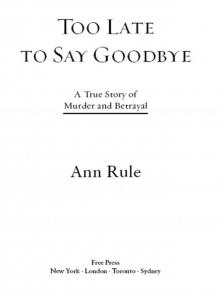 Too Late to Say Goodbye: A True Story of Murder and Betrayal
Too Late to Say Goodbye: A True Story of Murder and Betrayal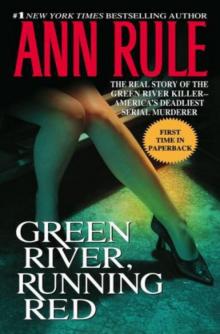 Green River, Running Red
Green River, Running Red Bitter Harvest
Bitter Harvest Dead by Sunset: Perfect Husband, Perfect Killer?
Dead by Sunset: Perfect Husband, Perfect Killer?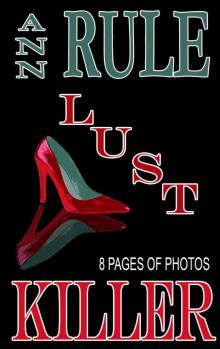 Lust Killer
Lust Killer And Never Let Her Go: Thomas Capano: The Deadly Seducer
And Never Let Her Go: Thomas Capano: The Deadly Seducer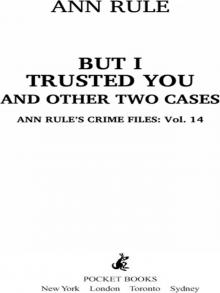 But I Trusted You and Other True Cases
But I Trusted You and Other True Cases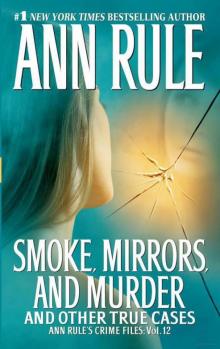 Smoke, Mirrors, and Murder and Other True Cases
Smoke, Mirrors, and Murder and Other True Cases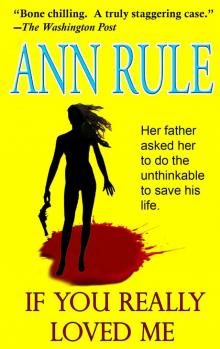 If You Really Loved Me
If You Really Loved Me Kiss Me, Kill Me and Other True Cases
Kiss Me, Kill Me and Other True Cases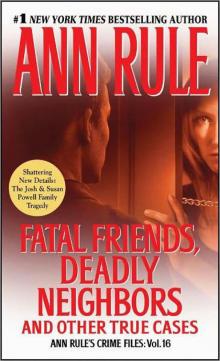 Fatal Friends, Deadly Neighbors and Other True Cases
Fatal Friends, Deadly Neighbors and Other True Cases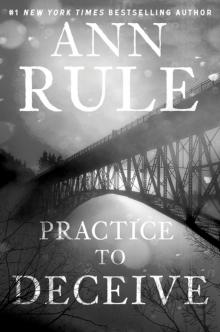 Practice to Deceive
Practice to Deceive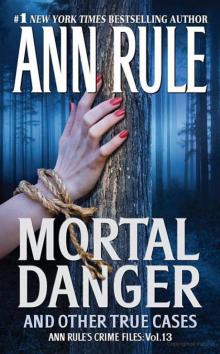 Mortal Danger and Other True Cases
Mortal Danger and Other True Cases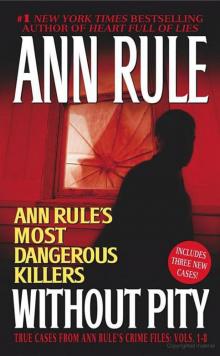 Without Pity: Ann Rule's Most Dangerous Killers
Without Pity: Ann Rule's Most Dangerous Killers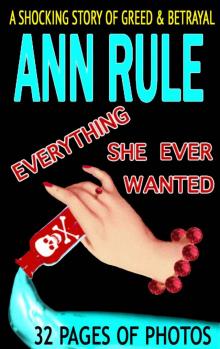 Everything She Ever Wanted
Everything She Ever Wanted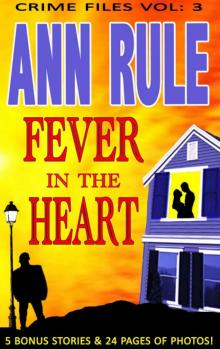 A Fever in the Heart and Other True Cases
A Fever in the Heart and Other True Cases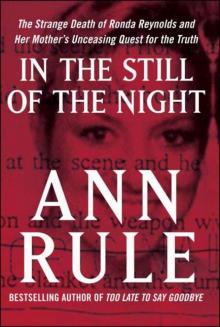 In the Still of the Night
In the Still of the Night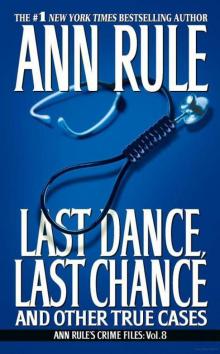 LAST DANCE, LAST CHANCE - and Other True Cases
LAST DANCE, LAST CHANCE - and Other True Cases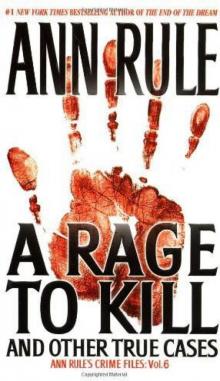 A Rage to Kill
A Rage to Kill The I-5 Killer
The I-5 Killer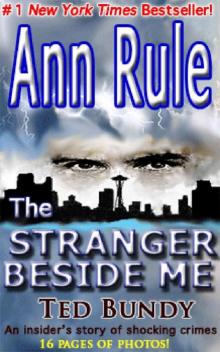 The Stranger Beside Me
The Stranger Beside Me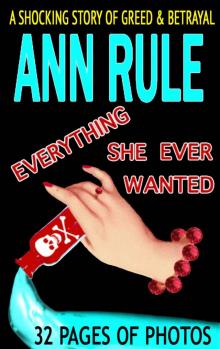 Everything She Ever Wanted: A True Story of Obsessive Love, Murder, and Betrayal
Everything She Ever Wanted: A True Story of Obsessive Love, Murder, and Betrayal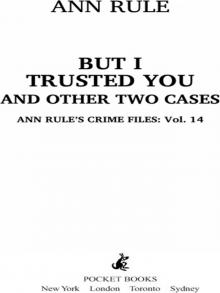 But I Trusted You
But I Trusted You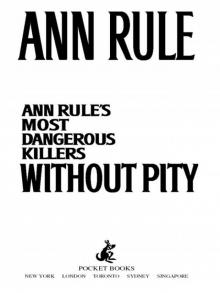 Without Pity
Without Pity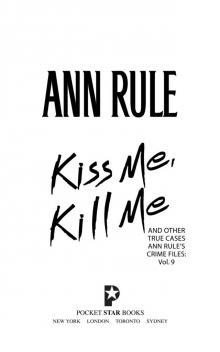 Kiss Me, Kill Me
Kiss Me, Kill Me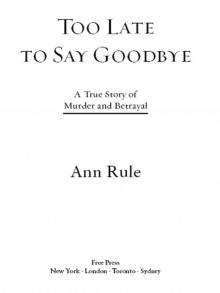 Too Late to Say Goodbye
Too Late to Say Goodbye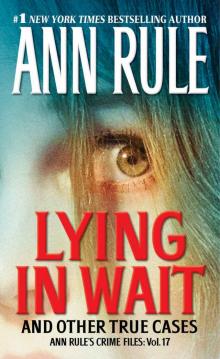 Lying in Wait
Lying in Wait Fatal Friends, Deadly Neighbors
Fatal Friends, Deadly Neighbors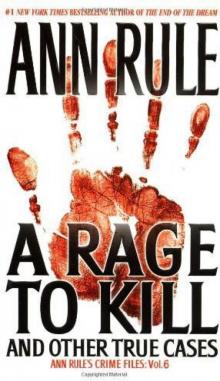 A Rage to Kill: And Other True Cases
A Rage to Kill: And Other True Cases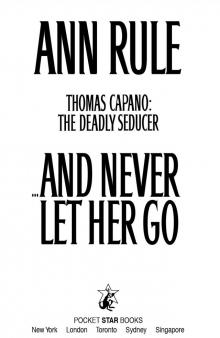 And Never Let Her Go
And Never Let Her Go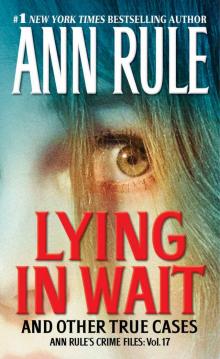 Lying in Wait Ann Rule's Crime Files Vol.17
Lying in Wait Ann Rule's Crime Files Vol.17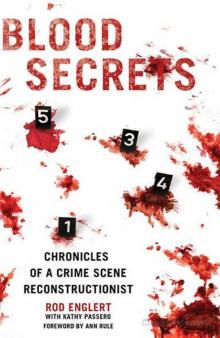 Blood Secrets: Chronicles of a Crime Scene Reconstructionist
Blood Secrets: Chronicles of a Crime Scene Reconstructionist No Regrets
No Regrets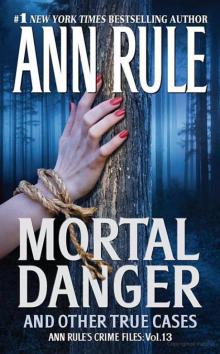 Mortal Danger
Mortal Danger But I Trusted You: Ann Rule's Crime Files #14
But I Trusted You: Ann Rule's Crime Files #14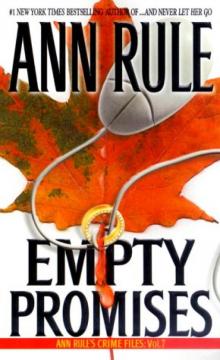 Empty Promises
Empty Promises Dead by Sunset
Dead by Sunset Last Dance, Last Chance
Last Dance, Last Chance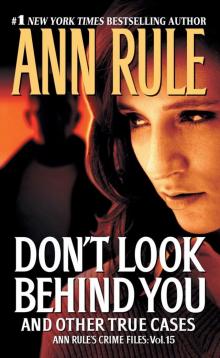 Don't Look Behind You
Don't Look Behind You